6 Horrifying Facts That Get Left Out Of Philippine History
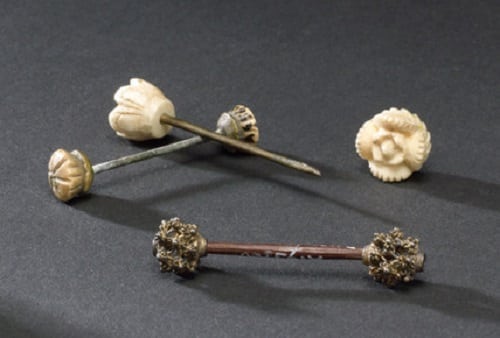
If you’re craving for bloodcurdling stories that will give you the goosebumps, look no further. Our history is chock-full of horror stories so horrifying that your teachers probably were too scared to even talk about them.
And remember that childhood dream of yours to invent the time machine? You probably would have ditched it sooner if you knew things like these were waiting for you…
Also Read: 6 True Stories From Philippine History Creepier Than Any Horror Movie
1. The Japanese Soldiers who Became WWII Cannibals
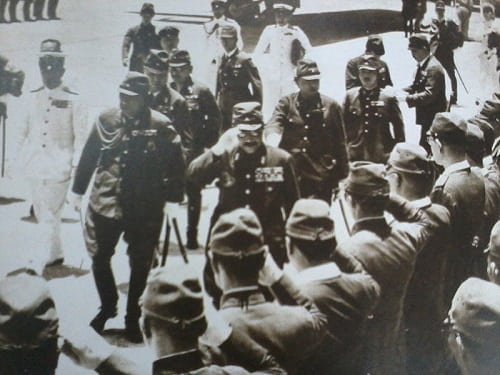
People who died of starvation perished because they ran out of choices. But some of the Japanese soldiers in the Philippines during WWII were different: they survived because they knew one thing that could sustain them if all else failed–the human flesh.
A news report published by The Pittsburgh Press in April 1945 tells the story of Lt. Col. Robert C. Williams, who reportedly got hold of Japanese circulars while he was in Leyte. The said evidence not only confirmed the practice of cannibalism within the Japanese army but also went so far as recommending which human body parts were best for eating.
In 1993, the Free Legal Assistance Group represented families from Bukidnon who claimed their relatives were victims of Japanese cannibalism during WWII. According to lawyer Oscar Musni, as much as 80 people, mostly tribesmen were killed by the Japanese soldiers for their flesh. Among their evidence were several chopped skeletal remains believed to have belonged to the victims.
READ: 5 Horrifying Pinoy Cannibals
However, if you think it was only hunger that forced the Japanese to become cannibals, you’re in for a great surprise.
Toshiyuki Tanaka, author of the eye-opening book Hidden Horrors: Japanese War Crimes In World War II, accidentally discovered war crimes documents while perusing the Australian government archives. These documents revealed at least a hundred reported cases of Japanese-initiated cannibalism–including in the Philippines. Worse, some of the Japanese who ate human flesh was not even hungry.
It is believed that they were forced to subject themselves to man-eating by their superiors. This only suggests that cannibalism was also used as a “power projection tool” or a way to build “nerves of steel” among the soldiers.
2. A Deadly Epidemic That Led to a Deadly Massacre

When a cholera epidemic hit Manila and nearby areas in 1820, thousands of people died in a matter of hours. Carts carrying dead bodies were everywhere, and not enough survivors were left to bury them all. Surprisingly, some of the deaths were not even cholera-related; rather, they were the victims of a gruesome murder frenzy. And it all started by a rumor.
The first case of cholera was observed along the Pasig River on October 4, 1820. It is believed that the disease was introduced into the country via the port of Manila, and originally came from neighboring countries that were likewise affected by the Asiatic Cholera Pandemic.
Despite the efforts of the French to offer medical assistance to the afflicted, some of the natives suspected that these foreigners poisoned the river, which then led to the epidemic. Rumor has it that the French wanted to take over the Philippines, and killing all the Tagalogs was part of the plan. The paranoia culminated on October 9th when hundreds of Filipinos conspired to plunder and massacre all foreigners–except the Spaniards–in Manila, Binondo, Tondo, and Cavite.
Related: The Cholera Squad of 1900s
Among the eyewitnesses who saw the gruesome massacre as it unfolded was Pierre Dobell, an American who served as the first Imperial Russian Consul in Manila. He said that many of the poor victims were “so cut up and mangled that it was impossible to recognize them.”
Another account of the event came from the French doctor Paul de la Gironiere who we already featured in a previous article. Gironiere saved another Frenchman, Captain Drouant of Marseilles, from the hands of an angry mob (see illustration above). After letting the latter escape, Gironiere himself narrowly cheated death by hitting his assailant with a cane. He was also helped by a native soldier, whose sick wife Gironiere previously treated.
In the end, the carnage claimed the lives of up to 28 Europeans and several Chinese. The chaos only subsided when the governor finally appeased the mob.
3. The Filipino Kids Who Smoked Like a Boss
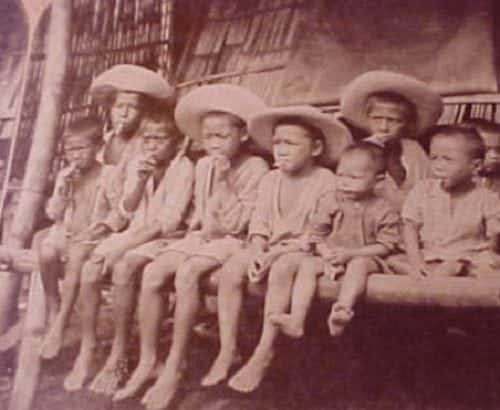
A child puffing a cigar may raise some eyebrows today, but that’s not the case a hundred or so years ago. In fact, Filipino families made smoking a family affair that women and even children as young as 2 or 3 years old could join in. It was partly because of the idea that puffing cigars and cigarettes could counteract environmental cold or dampness.
Smoking became part of everyone’s habit that some Spaniards once taunted that we Filipinos learned how to smoke before we even learned how to think. The colonizers, upon realizing that the tobacco industry was fast becoming profitable, established the infamous “tobacco monopoly” in the 18th century. It basically gave the government the exclusive right to plant tobacco and sell cigars.
Also Read: 20 Beautiful Old Manila Buildings That No Longer Exist
What the Spaniards thought would boost Philippines’ economy brought more harm than good. The monopoly encouraged so much corruption, poverty, and national unrest that it was finally abolished in 1881. The demand for cigars had since declined–so was the notion that smoking was safe for children.
4. The Day Palawan Became Hell on Earth
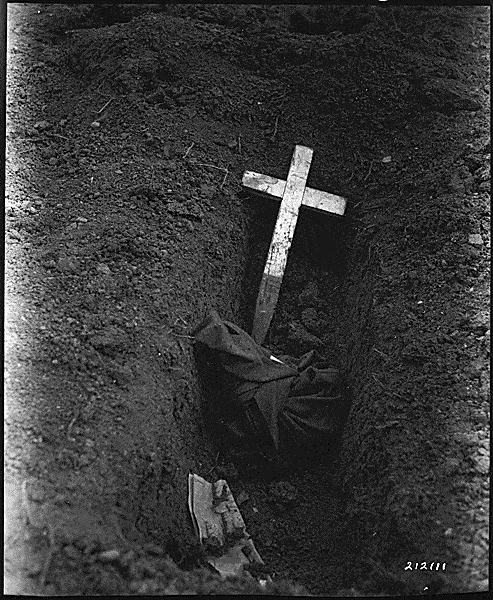
There are events in WWII that don’t receive as much commemoration. The Palawan massacre is one example.
It all happened on December 14, 1944. Marine Private First Class Glenn “Mac” McDole was one of the American POWs detained at the prison camp near Puerto Princesa. An alarm signaled them to get into the trenches which the Japanese previously ordered them to build. The trenches, they were told, would serve as air-raid shelters as soon as the invading American forces started bombing them.
For McDole and the rest of the prisoners, the fact that the Japs were preparing for the invasion only meant one thing: help was on its way. But it was actually a double-edged sword: they also heard that the Jap soldiers would kill every prisoner before anyone could even rescue them.
Also Read: 10 Facts About World War II That Never Made It To Your Philippine History Books
The truth was finally revealed on that fateful day. Captain Nagayoshi Kojima, the camp commander known as the “Weasel” among POWs, just ordered to have all the prisoners eliminated. So it was with great horror when McDole caught a glimpse of Japanese soldiers pouring buckets of gasoline and throwing lighted torches towards the POWs in another trench.
It was not long before he realized that they were all ordered to get into the trenches for one reason–to be burned alive.
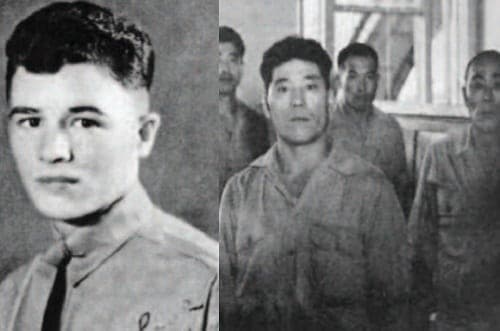
The sight of burning men and the sound of their screams stayed with the survivors for the rest of their lives. Anyone who managed to escape the burning trench was either bayoneted to death or killed by machine guns positioned from a distance. 159 American prisoners were killed that day.
Related Article: 10 Biggest Misconceptions About World War II In The Philippines
Most of the 11 survivors–including McDole–escaped the massacre by jumping from the cliff, hiding in a pile of garbage, before finally swimming into the sea for nine hours or more.
The Palawan massacre holds the distinction for having sparked a series of POW rescue missions, including famous raids in Cabanatuan, Bataan, and Los Baños. As for the culprits, they received less serious punishments than they actually deserved: they were either acquitted or received sentences ranging from 12 to 30 years of imprisonment.
5. The Bizarre, Painful Sexual Practices of Early Filipinos
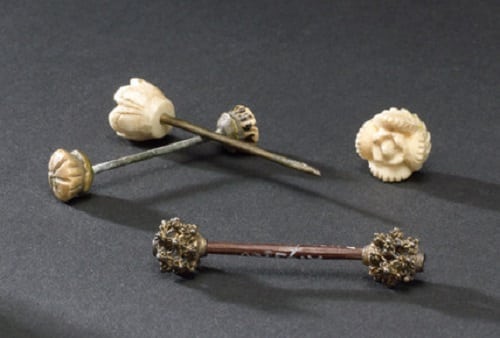
When Magellan and the rest of his team arrived in the Visayas in 1521, they were shocked to discover that Cebuano natives had such an intricate way of making love.
The early Cebuanos practiced a bizarre sexual custom called “palang” which means “genital stretching.” This involved the wearing of penis pins by men and the gradual opening of vaginas among women starting at the age of six. The whole process was complicated and painful, to say the least–especially for men.
According to chronicler Antonio Pigafetta, Visayan men adorned their private parts with pins–known as “tugbuk.” These pins “with a gold or tin bolt as large as a goose quill” were inserted crosswise near the head of the penis. The same sexual embellishment was used by other Asian men from Borneo and Thailand, where it served as a status symbol. The early Cebuanos, in contrast, made the pins available for all men regardless of social standing.
READ: 10 Shocking Old-Timey Practices Filipinos Still Do Today
Fr. Ignacio Alcina, a Spanish historian, despised the pins so much that he described it as a source of a “virulent cancer” and reported that some men actually died from it. For the Cebuano men, however, the “tugbuk” was a source of pleasure and even their women “wish it so, and said that if they did otherwise, they would not have communication with them.”
To give you an idea of how shocking this practice was, Pigafetta described it in details through his diary. Once the penis (with the pin attached) was inside the woman, it would stay there until “it gets soft.” The couple would remain locked to each other for as long as a day (or even more), prolonging the act as well as the pleasure (if there was any) that each could derive from it.
The weird sexual practice of early Filipinos was considered an abomination by the colonizers, so much so that Spanish friars made efforts to civilize Filipinos and eliminate such primitive custom.
Also Read: 12 Surprising Facts You Didn’t Know About Pre-Colonial Philippines
6. Filipino Warriors Drank From their Enemies’ Skulls a la Vikings
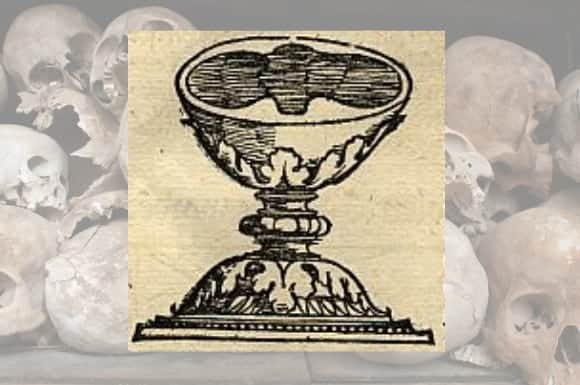
Although it’s not historically accurate, we often imagine Vikings as those European seafarers who wore horn helmets and drank from skull cups (i.e. drinking vessels made by cutting away the lower half of an inverted human skull).
Also Read: 10 Amazing Pinoy Trivia That Will Blow Your Mind
Contrary to popular belief, however, the Europeans were not the only ones who enjoyed this disgusting practice. No less than our own ancestors also thought it was a cool thing to do. For instance, Frederic H. Sawyer, an English engineer who lived in Luzon for many years, described in his book “The Inhabitants of the Philippines” (1900) the Negrito culture in Zambales:
“It was customary amongst them to take with them to their feasts the heads or skulls they possessed. The heads were placed on poles and ceremonial dances were performed around them. They also emulated the Vikings by making drinking cups out of their enemies’ skulls.”
Some of those who joined the Ilocos Revolt of 1660-1661 also resorted to this morbid ritual to celebrate the victory. One of the key players of the said revolt, Don Juan Magsanop of Bangi (Bangui), led his men including the Calanasa (Isneg) of eastern Ilocos Norte in celebrating the death of a Spanish friar.
And guess what was the highlight of the event? The drinking of alcoholic beverage straight from the friar’s skull.
References
Advancing Honest and Ethical Medical research (AHRP),. Hidden Horrors: Japanese atrocities include evidence of cannibalism. Retrieved 1 March 2016, from http://goo.gl/FCwycz
Apostol, V. (2012). Way of the Ancient Healer: Sacred Teachings from the Philippine Ancestral Traditions (p. 96). North Atlantic Books.
Bergreen, L. (2009). Over the Edge of the World. Harper Collins.
Camp, D. (2009). Survivor: Corporal Glenn McDole And The Palawan Massacre. Leatherneck Magazine, 26-29. Retrieved from http://goo.gl/6a0vcA
De La Gironiere, P. (1854). Twenty Years in the Philippines (pp. 20-31). New York: Harper & Brothers.
Kohn, G. (2007). Encyclopedia of Plague and Pestilence: From Ancient Times to the Present (p. 305). Infobase Publishing.
McCarthy, T. (1992). Japanese troops ‘ate flesh of enemies and civilians’. The Independent. Retrieved 1 March 2016, from http://goo.gl/joig0B
Melencio, G. (2009). Historical Marker’s on Filipino Women’s Sexuality During Spanish Colonial Times. PhilippineHistory.ph. Retrieved 2 March 2016, from http://goo.gl/FJ6yNx
Ocampo, A. (2005). Massacre in Manila. Philippine Daily Inquirer, p. A13. Retrieved from https://goo.gl/E5orfj
Ocampo, A. (2011). Cigarettes and Filipino nationalism. Inquirer.net. Retrieved 2 March 2016, from http://goo.gl/QSfzn
Ooi, K. (2004). Southeast Asia: A Historical Encyclopedia, from Angkor Wat to East Timor, Volume 1(p. 1188). ABC-CLIO.
Public Broadcasting Service (PBS),. Primary Sources: A Survivor of the Palawan Massacre. Retrieved 2 March 2016, from http://goo.gl/1P7faJ
Sawyer, F. (1900). The Inhabitants of the Philippines (p. 247). London: Sampson Low, Marston and Company Limited.
Sison, N. (2011). Tabacalera: 130 years of cigars and Philippine history. philSTAR.com. Retrieved 2 March 2016, from http://goo.gl/3HFGZx
The Pittsburgh Press,. (1945). Japs Get Lessons In Cannibalism, p. 7. Retrieved from https://goo.gl/KELrBZ
United Press International (UPI) Archives,. (1993). Filipino families accuse Japanese troops of cannibalism in WWII. Retrieved 1 March 2016, from http://goo.gl/QShGbZ
FilipiKnow
FilipiKnow strives to ensure each article published on this website is as accurate and reliable as possible. We invite you, our reader, to take part in our mission to provide free, high-quality information for every Juan. If you think this article needs improvement, or if you have suggestions on how we can better achieve our goals, let us know by sending a message to admin at filipiknow dot net
Copyright Notice
All materials contained on this site are protected by the Republic of the Philippines copyright law and may not be reproduced, distributed, transmitted, displayed, published, or broadcast without the prior written permission of filipiknow.net or in the case of third party materials, the owner of that content. You may not alter or remove any trademark, copyright, or other notice from copies of the content. Be warned that we have already reported and helped terminate several websites and YouTube channels for blatantly stealing our content. If you wish to use filipiknow.net content for commercial purposes, such as for content syndication, etc., please contact us at legal(at)filipiknow(dot)net